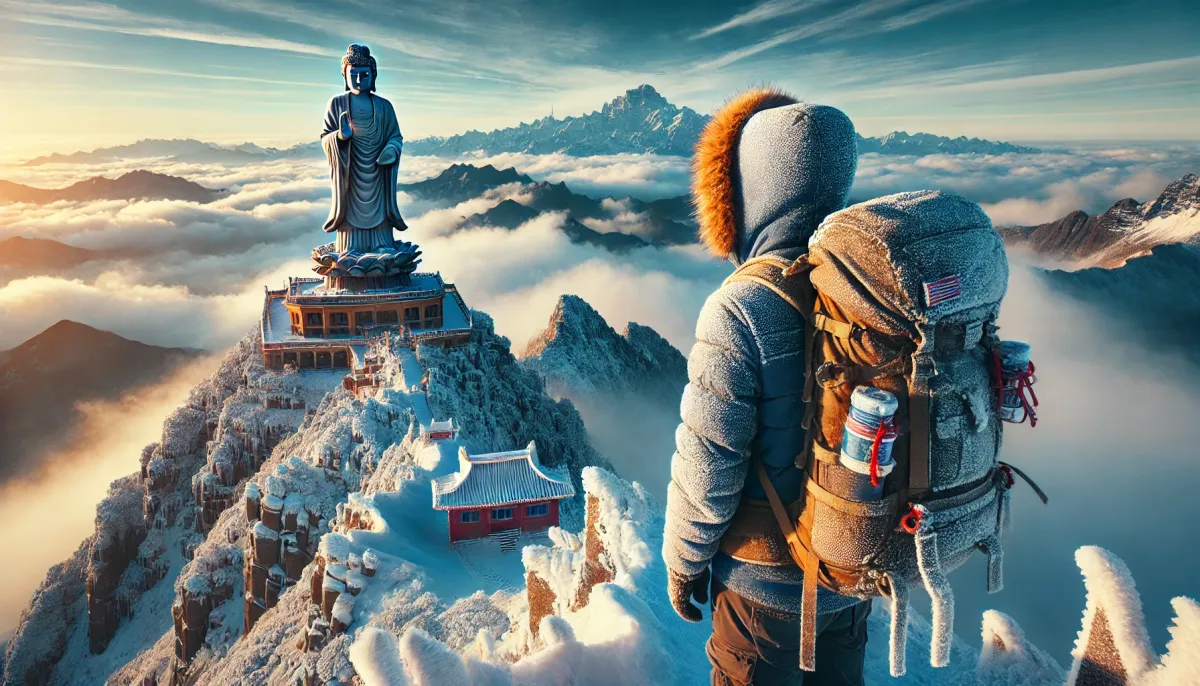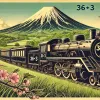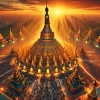Hey everyone, Mark here! I’m an American backpacker with a serious passion for exploring Asia's incredible cities and natural wonders. This time, I tackled Emei Shan, one of China's Four Sacred Buddhist Mountains, in the dead of winter. Let me tell you, it was an adventure!
The Early Bird Catches the… Snow?
My day started at 6:44 AM, fueled by a quick breakfast of an egg and a steamed bun, already anticipating the 7:00 AM shuttle bus to catch the stunning cloud seas. The ticket office was bustling – a surprisingly large crowd for that early hour! It was a bit surreal seeing that many people so early in the morning.
Ascending Emei Shan: A Journey Through Diverse Landscapes
The bus journey up Emei Shan, located in the transition zone between the Sichuan Basin and the Qinghai-Tibet Plateau, was breathtaking. The mountain's climate zones change dramatically from subtropical at the base to cold temperate at the summit, supporting over 3,000 plant species – a truly remarkable "Kingdom of Plants" and genetic treasure trove. After about a 40-minute ride, the bus stopped for a 10-minute water refill. This offered a chance to grab some necessities – I saw waterproof shoes for 40 yuan ($5.7 USD) and crampons for 25 yuan ($3.4 USD) at a small shop nearby (significantly more expensive than the 5 yuan I'd seen at the base!). The views were spectacular, with snow-covered trees and hints of the sunrise peeking through.
Reaching the Relay Station: The Climb Begins
At 8:42 AM, we arrived at Leidongping, the starting point for the final ascent to the summit. A 20-minute walk lay ahead before reaching the Jieyin Temple, where the cable car awaits. I was underdressed compared to other hikers; my sneakers felt a bit vulnerable amidst all the waterproof boots and gaiters. But a kind stranger helped me attach crampons to my shoes, saving my clumsy self!
Emei Shan: One of China's Four Sacred Mountains
China boasts four magnificent Buddhist mountains: Wutai Shan (Shanxi), Putuo Shan (Zhejiang), Jiuhua Shan (Anhui), and Emei Shan (Sichuan). While each holds religious and cultural significance, Emei Shan's stunning scenery, arguably the most beautiful of the four, is truly unparalleled. Its name, meaning "eyebrow mountain," originates from its elegant, slender shape. The sheer beauty was a perfect combination of sharp peaks, cloud seas, sunrise, Buddha's light, and snow views.
The Ascent to the Golden Summit (Jinding)
The trek to the cable car was…challenging. The ice and snow made the path slippery. I was unprepared for the sheer number of people braving the icy conditions, and my hands were freezing! The sheer volume of tourists in this icy landscape really surprised me.
The cable car was a welcome respite. The views from the 6-person gondola were simply stunning, offering a breathtaking panorama of the snowy landscape.
Emei Shan’s Golden Summit: A Spiritual and Scenic High Point
Arriving at Jinding at 10:37 AM (at an altitude of 3,000 meters), I was immediately struck by the sheer scale of the world's largest ten-directional Puxian bronze statue. As the spiritual home of Puxian Bodhisattva, Emei Shan holds deep religious significance, with its numerous temples attracting pilgrims for centuries. Jinding itself, the mountain's second-highest peak (3,077 meters), is a place of unparalleled beauty and religious significance. It's a UNESCO World Heritage site, alongside Leshan Giant Buddha, a designation it received in 1996.
A Feast for the Senses (and Stomach!)
The views from the summit were simply breathtaking. The sun was shining, offering a stunning contrast to the pristine white snow. Although I initially worried about food, it's worth noting there were numerous food stalls lining the trail to Jinding. Plenty of food and drink stalls along the trail helped me sustain my energy throughout the climb. I truly felt blessed that this visit offered glorious sunshine, after my last trip which featured seven straight days of rain.
The Majestic Puxian Bodhisattva Statue
The highlight of Jinding is undoubtedly the colossal Puxian Bodhisattva statue (48 meters tall, weighing 660 tons), a breathtaking display of artistry and religious devotion. This statue, composed of gold, silver, and copper alloy, depicts ten manifestations of the Bodhisattva, symbolizing his ten great vows. The statue's lotus-shaped base, topped by three separate Buddha faces, further underscores its symbolism.
A Winter Wonderland: Emei Shan's Unparalleled Beauty
If you only have one chance to visit Emei Shan, I highly recommend a winter trip. The snowy landscape is truly unlike anything I've ever experienced. The contrast between the snow-covered pines, the sun, and the blue sky was breathtaking.
I spent some time at the top, taking in all the beauty – until I realized the sheer number of people waiting to take the cable car down! The stunning scenery, however, made waiting worth it. It was the perfect end to an incredible journey.
Practical Information for Your Emei Shan Adventure
| Item | Price (approx. USD) | Notes |
|---|---|---|
| Waterproof Shoes | $5.7 | Significantly cheaper at the base |
| Crampons | $3.4 | Also cheaper at the base |
| Corn | $1.4 | Available at various points along the trail |
| Pork Ribs | $4.2 | A popular local snack |
| Sausage | $2.1 | A good energy boost |
| Cable Car | Varies | Check the official website for current pricing |
| Photos | $8.5 - $10.5 | Prices vary by location and type of photo |
| Temple Donations | Varies | Offerings at temples are at your discretion |







